 This past weekend in church, one of the readings was Romans 8.12-25. In it, I saw something new that I had never seen before even though it is a passage I have read and heard countless times during my life. It may even be one of those that I might even be able to recite part of from memory. It is curious to me how these things happen. Now Christians explain this as the Holy Spirit illuminating the scriptures. Which I do believe happens, however anyone who spends enough time with a text has the possibility to read it with “new eyes”. All those things that we encounter in our lives between the readings come into play and activate in our most recent reading to suggest the possibility of new depths of or alternate meanings. Whatever it is, I appreciate the new ideas and possibilities. So here is the passage: 12So then, brothers and sisters, we are debtors, not to the flesh, to live according to the flesh— 13for if you live according to the flesh, you will die; but if by the Spirit you put to death the deeds of the body, you will live. 14For all who are led by the Spirit of God are children of God. 15For you did not receive a spirit of slavery to fall back into fear, but you have received a spirit of adoption. When we cry, “Abba! Father!” 16it is that very Spirit bearing witness with our spirit that we are children of God, 17and if children, then heirs, heirs of God and joint heirs with Christ—if, in fact, we suffer with him so that we may also be glorified with him. 18I consider that the sufferings of this present time are not worth comparing with the glory about to be revealed to us. 19For the creation waits with eager longing for the revealing of the children of God; 20for the creation was subjected to futility, not of its own will but by the will of the one who subjected it, in hope 21that the creation itself will be set free from its bondage to decay and will obtain the freedom of the glory of the children of God. 22We know that the whole creation has been groaning in labor pains until now; 23and not only the creation, but we ourselves, who have the first fruits of the Spirit, groan inwardly while we wait for adoption, the redemption of our bodies. 24For in hope we were saved. Now hope that is seen is not hope. For who hopes for what is seen? 25But if we hope for what we do not see, we wait for it with patience. I think, looking back on it now, I likely read this passage in a way was about human struggles and the hope that comes from faith in spite of current circumstances. Now, without looking, Paul is writing to encourage and teach those living in Rome dealing with a pretty crappy situation struggling under persecution. This is all pretty standard. What was new for me is how creation is bound up with humanity in this struggle. Look at verse 19-23 again. Creation awaits salvation too! It languishes awaiting its freedom. Again, looking back on it, that I think I conflated humanity as part of creation, which it is, but verse 23 articulates an important rhetorical distinction (23and not only the creation, but we ourselves). This distinction that Paul sets between humanity and creation is an important one. We see, that creation suffers awaiting the same freedom from bondage that humanity awaits. This was an unbelievable thought. Over the recent years, with my interest in place and shifting theological emphases, I’ve come to think more about the relationship between humanity and the earth very differently. Often, for a variety of long held philosophical reasons firmly rooted in Protestant thought, the physical is diminished in favor of the spiritual. The logic goes that since “we” will fly away from this physical earth, it is of no real lasting significance. Tragically, the position of caretaker from Genesis becomes one of dominance and misuse rendering it a disposable reality to be mined for all its worth to fuel our economies. As I think about this further, this action only amplifies the groaning. Perhaps what has allowed this idea to emerge is my recent time in the oil fields of North Dakota. At the beginning of this month, I spent 2 solid days, driving through some of the most beautiful landscape of North Dakota which has now become a sprawling oil field. Land is being drastically reshaped, gouged, drilled, drug, and about any other manner of soil movement you might consider. I cannot help but to see the groaning of the earth around me when I drive out there. While the Psalms retell the laments of those who cried out, “How long?” I fear this is the cry of the earth as well?
0 Comments
 2 weeks ago I took my Advanced Photography class out on a little field trip to this wonderful little church near Rugby, ND. With the help of Dan Smith, an area photographer who knows the region well, got us permission to enter the church and a nearby homestead. There are many abandoned houses and buildings in ND. I have mixed feelings about them. They are great photographic material...detail and decay. But there is much more to North Dakota than a decaying set communities on the upper prairies.  I will admit it...I am a fan of the Olypics...both summer and winter. My first memories of the Olympics were the 1984 summer games in LA. I remember watching boxing, Zola Budd run Mary Decker Slaney off the track and of course Mary Lou Retton. I remember the 84 winter games in Sarajevo. Somehow these games in particular deeply formed my fondness for the Olympics. I remember thinking it was such a beautiful place. I lamented the Bosnian war because of those memories of the 84 games and my memories of that place. (The image above shows a bit of the damage the war caused to many of the sites of the games.) Today, I saw on Facebook a link to an article about the ruin that has become many of the venues from the Beijing Olympics in 2008. Take a look at the images here. This is heartbreaking to me. Not just because abandoment is always has a sad element to it, but because of the sheer cost of it to people of China. What do our ethics of place suggest about these ruins? Certainly the Olympics, particularly for China, were about putting on a beautiful face for the world...about showing how modern and advanced they are as a rising superpower. But was it all an act of ideology...propaganda? The way they have left the buildings go would suggest so to me at least. What sickens me, is that leaving the buildings to ruin compounds the monetary cost in a country where there are so many people in poverty. No longer are they a source of pride for a developing nation, they are the signs of a nation's propaganda. After posting the article on my own FB account, a friend wondered if that happened more often. Apprently so. Another friend posted a link to an article about the modern ruins of Greece...the Olympic venues from the 2004 games. This article was from 2010 but already mentions the economic collapse of the country and the inability to maintain or advance the sites as had originally been hoped for. If we view the Olympics through a lens of place and economics, what comes from those investigations? While the country does make an increase in revenue for the weeks before, during, and after the games, but should a nation host the games if it is unable to maintain the venues it charges its citizens for? Are these sites, like most other commodities, simply disposable after their period of use has passed? I dont know, but these thoughts will be in the back of my mind as I watch the games with a little less enjoyment this year.  Read Story here. I hate stories like this. As someone who is deeply concerned about place, its role in peoples lives and beliefs, regardless of religion, this makes me deeply distressed. I suspect because I see these places not only in their religious and cultural sense, but also in an artistic, architectural, aesthetic sense as well. I simply do not understand the desire to destroy a work of art or religious site...regardless of religion. I do not know much about these sites, or how strictly they follow the legends, but their destruction will cause disorientation and confusion in their belief system...I suppose that is what Al-Qaida is after. Sad. 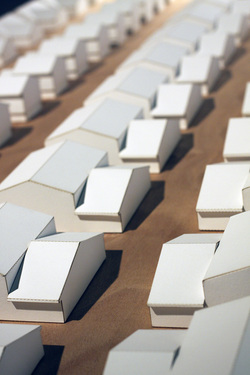 As I said a few weeks ago, it is MFA season here at UND's Hughes Fine Art Center. Last week Meghan Duda presented her work. Influenced by a range of artists from the New Topographics to Gordon Matta-Clark, Meghan's work considers the ubiquity of the suburban home. When Meghan and her husband relocated to Fargo a few years ago, she was struck by the possibility of horizontal expansion has shaped the suburban housing areas of Fargo. Home shapes follow a few rough patterns in theses new developments. And yet Fargo is not alone in that respect. Several of her images come from Utah as well. As someone who shares her interest in the New Topographics, I was immediately struck by (at least what appears to me) a strong lineage with several members of the group, namely Stephen Shore and the Becher's. Her connection to Shore is in subject matter while her connection to the Becher's is in matter of typologies of suburban homes as well as their rigorous system of grids within their installations. Following this method of Becher's typologies, Duda has laser cut the houses from the image thus breaking up the picture plane. By floating the image off the back frame, she is able to accentuate the break and absence with the lighting and shadows. On others, she has used the laser to etch detailed house floor plans over the image. Another one of the key factors in her images is that she also draws upon the objective or sense of detachment so often associated with the group but extends backward strongly to Ed Ruscha. Like the New Topographers, she attempts to stay neutral...balancing between critique and endorsement. When I left for Cyprus, I really had no idea what I was getting into or what the body of work would look like. I had vague ideas of the human fingerprint upon the landscape and the distance between the contemporary and ancient records made upon/within the landscape.
When I got there, I began looking for how we were marking the land in search for the historical marks. And with this perspective, several shots became especially poignant. This one in particular conveys those ideas. Here the literal footprints imprinted upon the landscape divide two forms of trash: one contemorary, one ancient. Both offer some sort of record of human presence illustrated by the ephemerality of the footprints in the dirt. Here the two worlds become condensed into one shot. What is striking to me about this, is how these ideas pass over into the theory of history, hermeneutics and beyond. Here we can see, literally see, our impact upon our studies. We cannot ignore our our own presence, presumptions, pe within our research. The photo embodies my hopes for the overall residency, with a touch of humor as well. The famed photographer Henri Cartier-Bresson spoke of the "decisive moment" saying, "There is a creative fraction of a second when you are taking a picture. Your eye must see a composition or an expression that life itself offers you, and you must know with intuition when to click the camera. That is the moment the photographer is creative," he said. "Oop! The Moment! Once you miss it, it is gone forever." I have missed hundreds of shots because of this fleeting nature of movement of people, objects, light and any other number of variables. I have also just left the scene of a potential photograph wishing later that I had just shot it. This is one of those photos that I am so glad that I shot.
The cars are essential aspects of the project for getting groceries to hauling the team back and forth to the site, and general travel around the island visiting other sites. They take a beating and need a good cleaning when we are done. But there is something beyond the necessity of the cars that endears this photograph to me. I suppose it is the humor of it...something reminiscent of Elliot Erwitt perhaps. What are the odds that these cars would stop, equal distances among them, and be left on the site with the hatch wide open? It is perhaps the decisive moment in the reco One of the most striking things to me about this space was the ancient debris littering the surface. It would likely be surprising for North Americans, let alone Iowan's like myself, to find a single piece of an ancient amphora handle in their field. So the sheer volume of pottery shards scattered over the surface was astounding to me. On one of my first trips out to site, my head still floating somewhere over the Atlantic, I sat down in the heat of the afternoon and just began to collect the pieces within an arms reach of where I sat and photographed them. I did this several times finding both fine and coarse ware that had worked itself up to the surface from time, erosion and with the farmers help. I surprised by the density objects on the surface, their diversity, and the very fact that I could pick up these ancient pieces of pottery.
The image above is one of two composites like this that were a part of the show. My hope with these images was to record my first engagements with the ubiquitous debris at this site in a non-scientific or archaeological sense. Instead to suggest the wonder in a Iowa farmers son at the geographic and temporal distance between the hands that made these objects and my own now holding them. One of the things about being a photographer is that you rarely get your photo taken. While photographers may produce a significant record and documentation by virtue of their presence, they are not often explicitly imaged. Occasionally the amateur photographer will accidentally capture his or her shadow or reflection in a window, but these are largely unintended. However with this photo, which is one of my favorites from the series, purposefully includes my shadow at the center of the image. In doing so, I am attempting to take a reflexive stance that acknowledges the subjectivity of the photographic enterprise, which becomes a sort of analog to the presence of the archaeologist in the field.
Beyond the conceptual aspects, I love how the shadow breaks the image in half, while the two tire tracks of the road lead off to the right, that angle is in some ways mirrored by the dual poles of the fallen sign jutting off to the left with both the road and one of the poles terminating at the horizon. Today, in continuing with the process of uploading my work to this new website, I finally got around to tackling the PKAP AIR series that I named Topos/Chora. It is hard to believe that the residency was over 2 years ago already. And over those years I have created a great number of other series, to the point that past work is quickly left behind under the demands of the MFA program. So it was a joy to pull out the images again and look at them as old friends that I've not seen in a while.
Today in viewing them in my home office on the third floor of our apartment building, I look out upon two gloriously green trees (one within feet of my window) and I am struck by the contrast of these greens to the ubiquitous browns of the images. Often the only islands of color in the images are the buckets or clothing, and even that is scarce when the the khaki team t-shirts are paired with khaki pants. But even this still suggests my overall conceptual goal of the project as a reflexive perspective of humanity in the landscape. Over the next few weeks I hope to spend a little time with these images again, and share some thoughts about my favorites. |
Ryan StanderArchives
January 2018
Categories
All
|


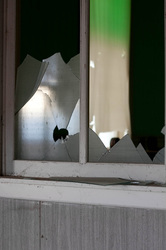
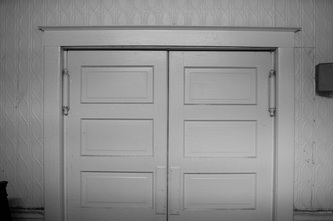
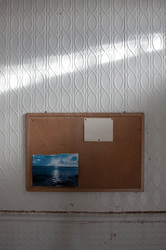
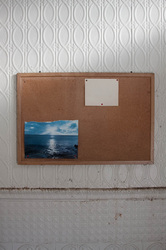







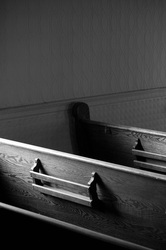

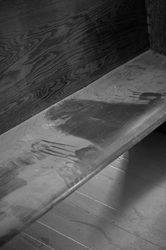
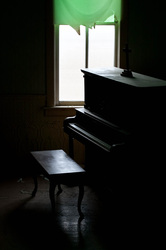



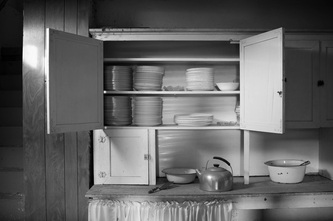


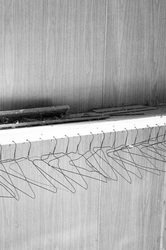
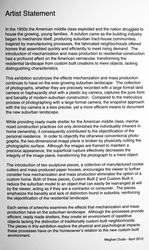











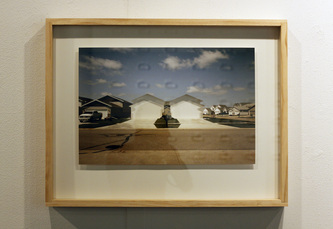

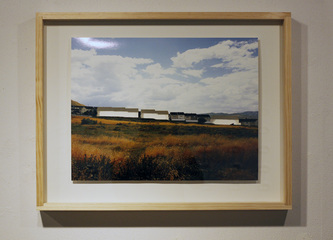



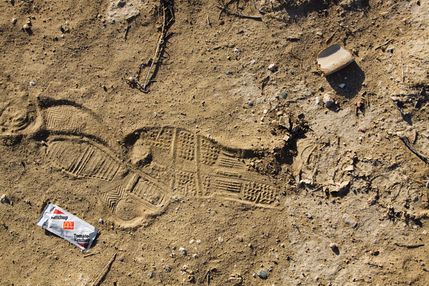





 RSS Feed
RSS Feed
